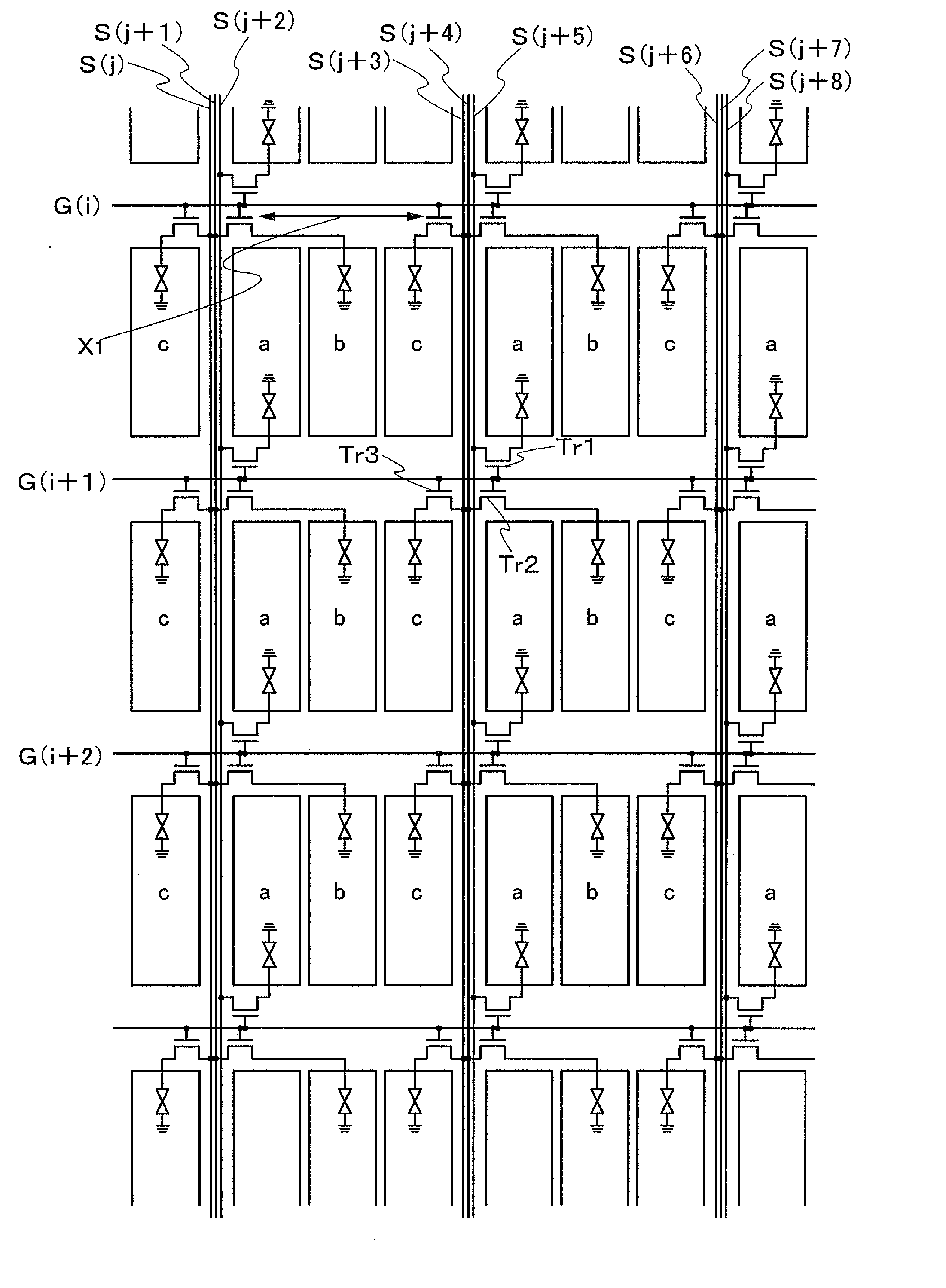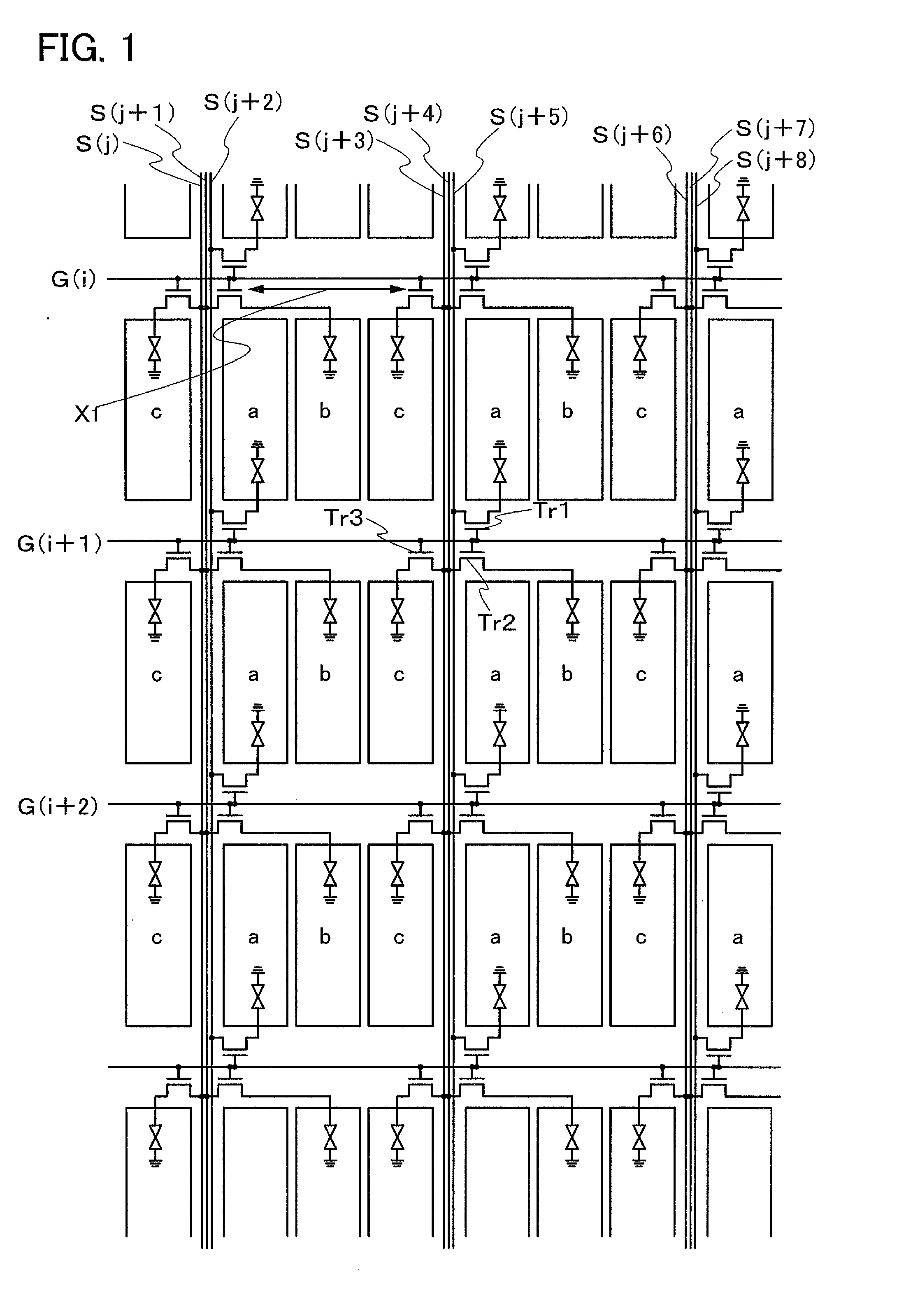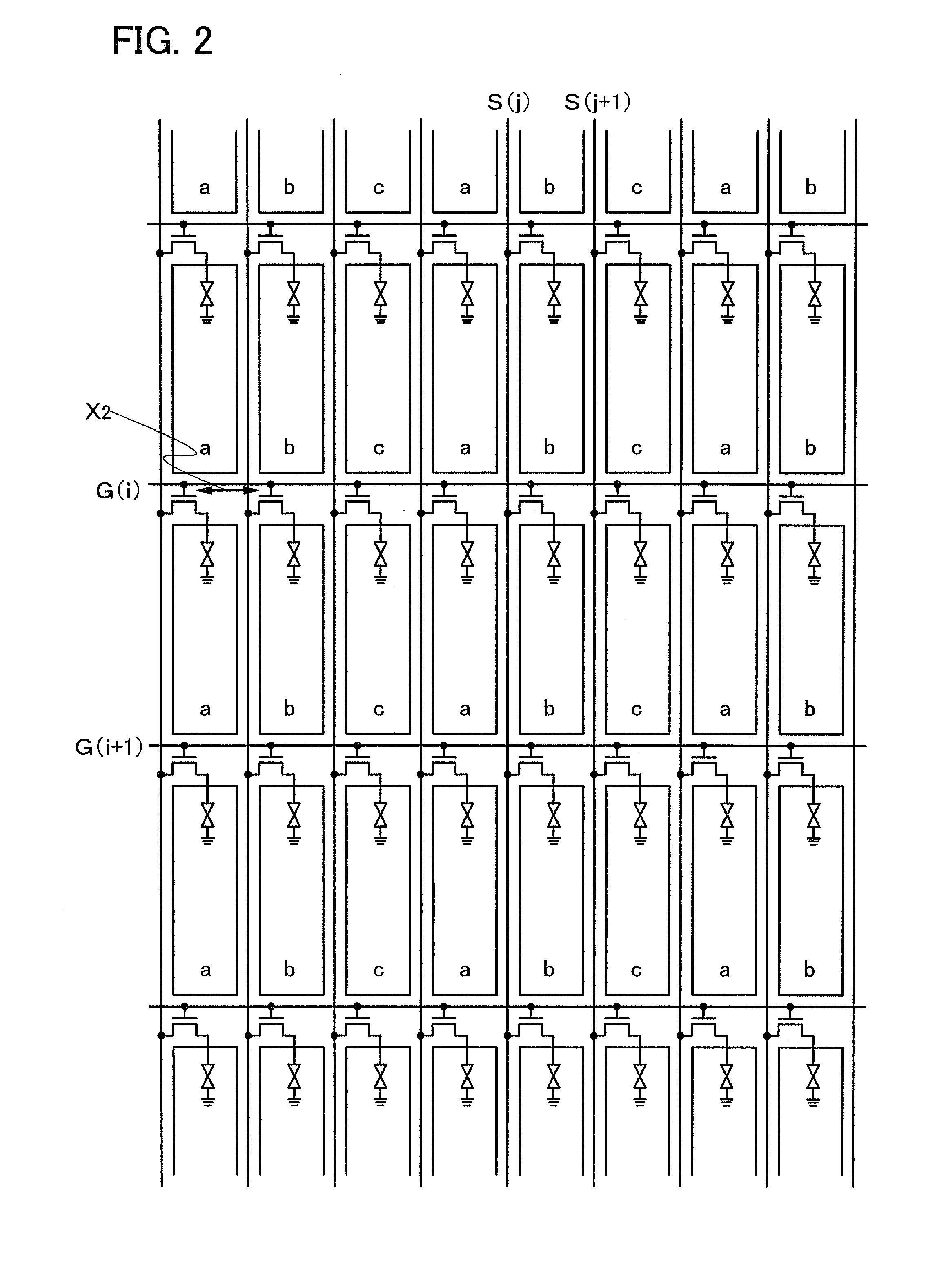TFT arrangement for display device
a display device and arrangement technology, applied in static indicating devices, instruments, optics, etc., can solve problems such as display defects, difficult to arrange all tfts apart from the joint portion, etc., to reduce the aperture ratio, increase the distance between regions, and increase the alignment margin
- Summary
- Abstract
- Description
- Claims
- Application Information
AI Technical Summary
Benefits of technology
Problems solved by technology
Method used
Image
Examples
embodiment mode 1
[0034]FIG. 1 is a schematic view illustrating an example of a structure of an active matrix display device according to one mode of the present invention. A pixel of this embodiment mode has a structure in which three sub-pixels each having a rectangular shape or a shape similar to the rectangular shape, that is, “a” (also referred to as a first sub-pixel), “b” (also referred to as a second sub-pixel), and “c” (also referred to as a third sub-pixel) are arranged in a stripe pattern so that the long side of the sub-pixel is parallel to a signal line and in which three signal lines are close to each other and interposed between adjacent pixels.
[0035]Note that a specific structure of the sub-pixels “a”, “b”, and “c” is not limited. For example, R (red), G (green), and B (blue) can be applied to the three sub-pixels.
[0036]A TFT which is provided at the first sub-pixel of a first pixel arranged in a region surrounded by a scanning line G(i), a scanning line G(i+1), signal lines S(j+3) to...
embodiment mode 2
[0042]FIG. 3 is a schematic view illustrating an example of a structure of an active matrix display device according to one mode of the present invention. A pixel of this embodiment mode has a structure in which three sub-pixels having a rectangular shape or a shape similar to the rectangular shape, that is, “a” (also referred to as a first sub-pixel), “b” (also referred to as a second sub-pixel), and “c” (also referred to as a third sub-pixel) are arranged in a stripe pattern so that the long side of the sub-pixel is parallel to a scanning line and in which three scanning lines are close to each other and interposed between adjacent pixels.
[0043]Note that a specific structure of the sub-pixels “a”, “b”, and “c” is not limited. For example, R (red), G (green), and B (blue) can be applied to the three sub-pixels.
[0044]A TFT which is provided at the first sub-pixel of a first pixel arranged in a region surrounded by scanning lines G(i) to G(i+2), scanning lines G(i+3) to G(i+5), a sig...
embodiment mode 3
[0048]FIG. 5 is a view illustrating an example of a structure in which four TFTs are arranged in the periphery of an intersection portion of a scanning line and a signal line in an active matrix display device. A pixel of this embodiment mode has a structure in which three sub-pixels each having a rectangular shape or a shape similar to the rectangular shape, that is, “a” (also referred to as a first sub-pixel), “b” (also referred to as a second sub-pixel), and “c” (also referred to as a third sub-pixel) are arranged in a stripe pattern so that the long side of the sub-pixel is parallel to a signal line and in which four signal lines are close to each other and interposed between adjacent pixels.
[0049]In other words, the pixel of this embodiment mode has a structure in which four sub-pixels having a rectangular shape or a shape similar to the rectangular shape, that is, “a” (also referred to as a first sub-pixel), “b” (also referred to as a second sub-pixel),“c” (also referred to as...
PUM
 Login to View More
Login to View More Abstract
Description
Claims
Application Information
 Login to View More
Login to View More - R&D
- Intellectual Property
- Life Sciences
- Materials
- Tech Scout
- Unparalleled Data Quality
- Higher Quality Content
- 60% Fewer Hallucinations
Browse by: Latest US Patents, China's latest patents, Technical Efficacy Thesaurus, Application Domain, Technology Topic, Popular Technical Reports.
© 2025 PatSnap. All rights reserved.Legal|Privacy policy|Modern Slavery Act Transparency Statement|Sitemap|About US| Contact US: help@patsnap.com



